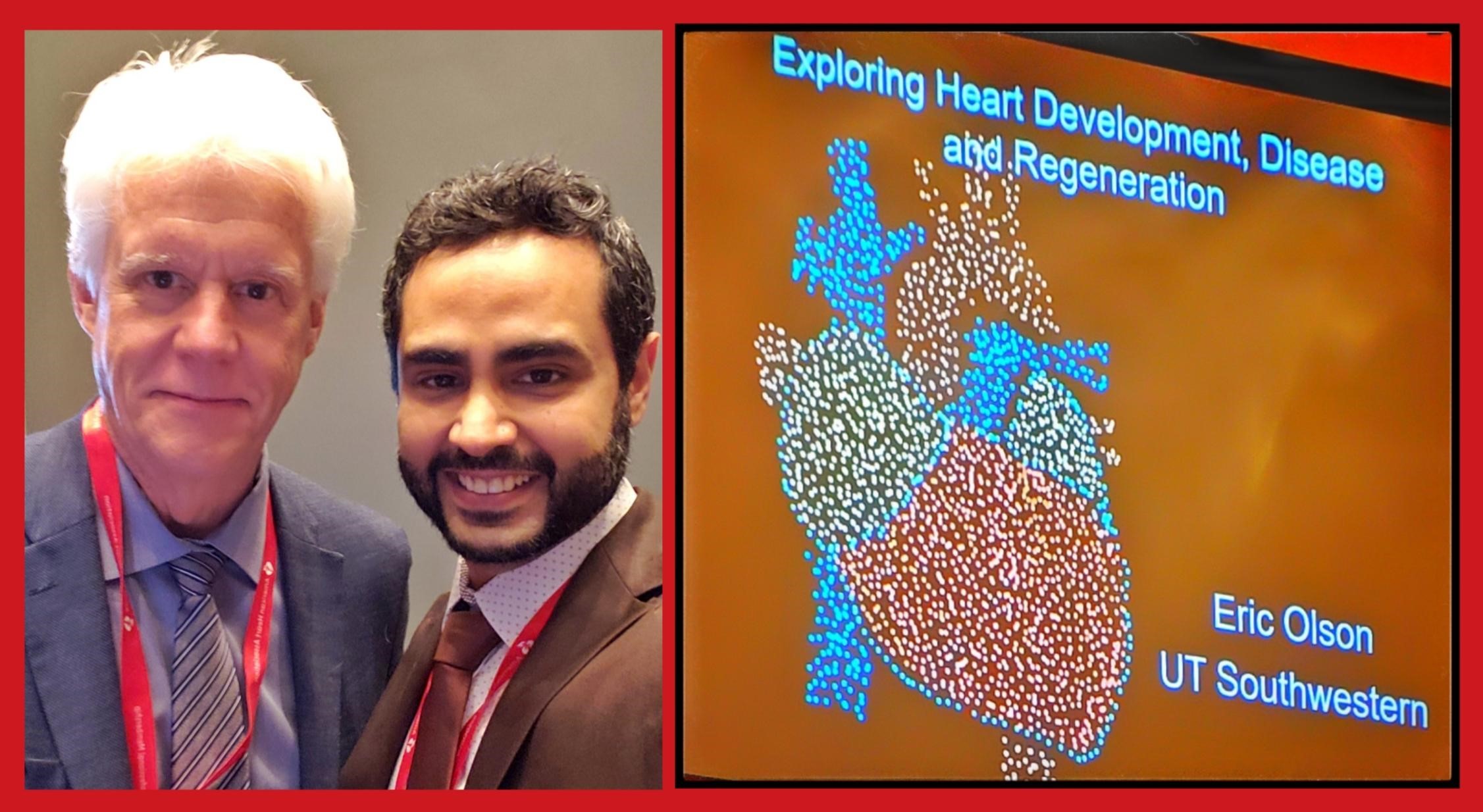One of the most important functions of professional meetings, such as AHA Scientific Sessions presently here in Philadelphia, is the ability to bring together trail-blazers, leaders, senior distinguished folks, and put them in the same rooms as students, trainees, and early career professionals. These are the types of interactions that pollinate and spread knowledge, propel further discovery, promote and encourage generation after generation of scientists, doctors, healthcare professionals into carrying the torch further towards a healthier longer life for all.
It is of course of no surprise that the AHA Scientific Sessions meeting is one that attracts the participation of accomplished researchers to come and share their research insights, accumulated wisdom, and give a hint or two about what to do (or what to avoid, from first-hand knowledge perspective). In my personal career field, there are probably no names that come above Dr. Eric Olson in terms of status within the area of research. My former PhD supervisor holds Dr. Olson as a personal role model and mentor, and has mentioned his name countless times during my 5 years of training in his lab. In fact Eric Olson has been referred to in terms closer to a deity than just a scientist. While I’ve never met him, I knew all about him and a lot about his research, he’s the equivalent to a celebrity the likes of Will Smith or Julia Roberts, or at least that’s the best analogy I could make for this scenario.
Being here at AHA19 however has given me the chance to meet Dr. Olson finally, and just as I have heard countless times before, Eric is a humble and impressive scientist, approachable by anyone, since I just walked up to him without advance notice, introduced myself to him mere minutes from his scheduled lecture in the Science Catalyst Keynote session. His down to earth attitude and ability to engage with an unfamiliar early career scientist are reminders that the best, most distinguished researchers are not elitist, discriminating or unapproachable, but in fact are bridge-builders, promoters and seekers of knowledge, everywhere, and by and from everyone that has knowledge to share or seek out.
 While Dr. Olson is an excellent example, he is by no means a unique case. Conferences and professional meetings, happening everywhere across the world, all provide chances like this one, where knowledge seekers and knowledge providers congregate in rooms to share, discuss and plan, so that most times everyone leaves these rooms more educated and enlightened, than when they first walked in. Here in Philadelphia this weekend, one of the mottos on everyone’s tongue, surely because we are provided a special performance from the hit play Hamilton is “Be in The Room,” which references the American nation building efforts done by the US constitution founders. Here I conclude by extending this motto into present day health and biomedical research, by saying to all, try if you can, and be in the rooms where science happens!
While Dr. Olson is an excellent example, he is by no means a unique case. Conferences and professional meetings, happening everywhere across the world, all provide chances like this one, where knowledge seekers and knowledge providers congregate in rooms to share, discuss and plan, so that most times everyone leaves these rooms more educated and enlightened, than when they first walked in. Here in Philadelphia this weekend, one of the mottos on everyone’s tongue, surely because we are provided a special performance from the hit play Hamilton is “Be in The Room,” which references the American nation building efforts done by the US constitution founders. Here I conclude by extending this motto into present day health and biomedical research, by saying to all, try if you can, and be in the rooms where science happens!
The views, opinions and positions expressed within this blog are those of the author(s) alone and do not represent those of the American Heart Association. The accuracy, completeness and validity of any statements made within this article are not guaranteed. We accept no liability for any errors, omissions or representations. The copyright of this content belongs to the author and any liability with regards to infringement of intellectual property rights remains with them. The Early Career Voice blog is not intended to provide medical advice or treatment. Only your healthcare provider can provide that. The American Heart Association recommends that you consult your healthcare provider regarding your personal health matters. If you think you are having a heart attack, stroke or another emergency, please call 911 immediately.